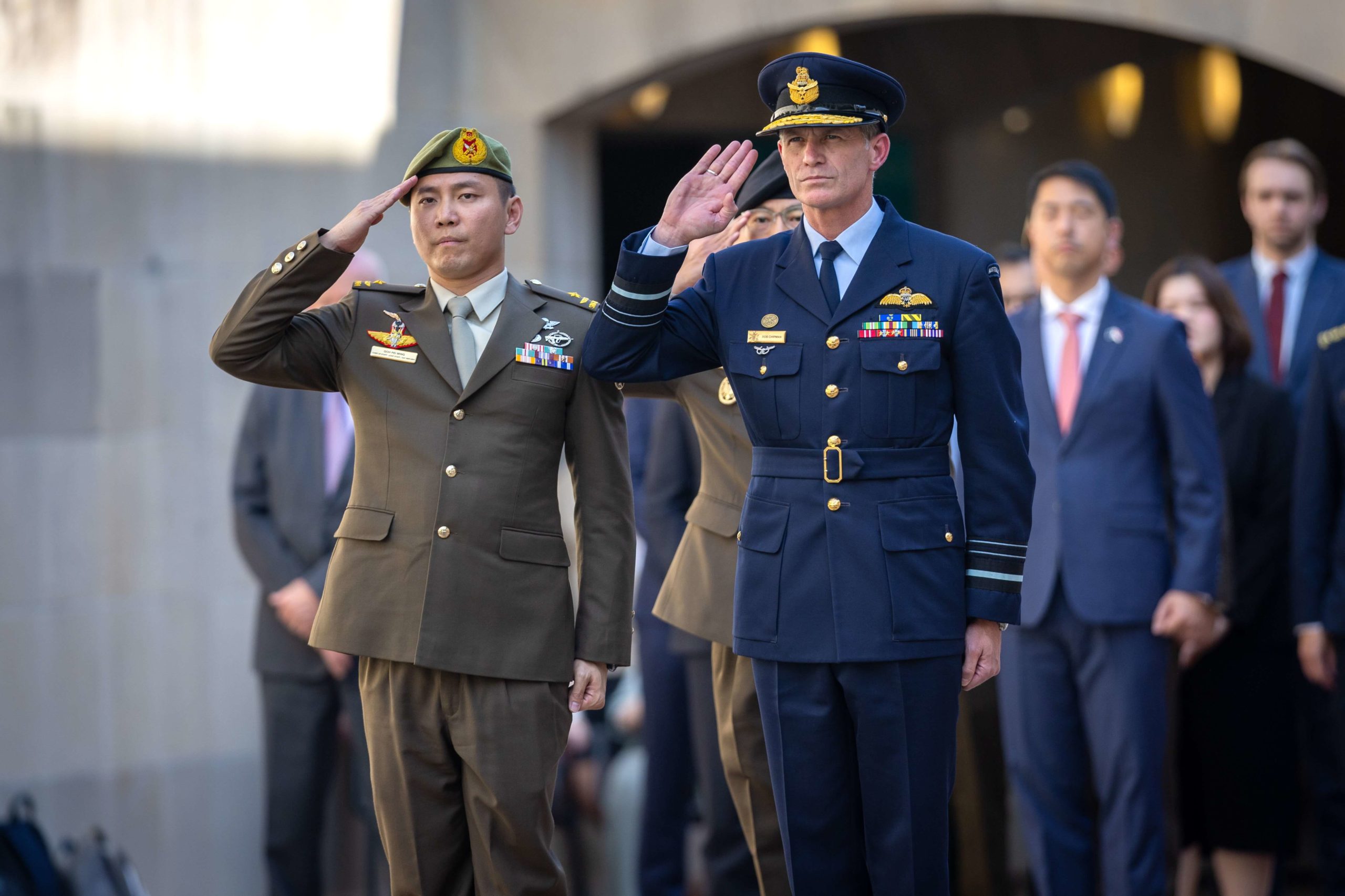Shaping a Way Ahead for the Australian Defence Force in the Context of Global Strategic Transition
At the May 22, 2025 Sir Richard Williams Foundation seminar, Air Marshal Robert Chipman, Vice Chief of the Australian Defence Forces, recently outlined the nation’s evolving approach to national security in a comprehensive address.
Chipman describes Australia’s security environment as “complex and deteriorating,” with the international system under strain from great power competition between China and the United States. He emphasizes that hard power has become preeminent again, with the Indo-Pacific as the epicenter of this competition. The risk of conflict is assessed as increasing, with reduced strategic warning time.
The comfortable certainties of the post-Cold War era have evaporated. China’s rise and its challenge to the established international order, combined with America’s more selective engagement globally, has created what Chipman describes as a fundamentally different strategic landscape. Unlike the Cold War’s “perverse clarity” of mutually assured destruction, today’s great power competition lacks the stabilizing frameworks of arms control and non-proliferation agreements.
This shift has profound implications for Australia. The Indo-Pacific has become the epicenter of great power competition, placing Australia at the geographic heart of rising tensions. The traditional buffer of distance that once provided strategic warning time has been compressed by technological advances and increasingly bold grey-zone activities by state actors.

Conventional military conflict could escalate to nuclear war through what military strategists call “horizontal and vertical escalation.” This possibility demands entirely new approaches to deterrence, coalition management, and strategic decision-making.
Australia’s response has been to develop what officials term a “strategy of denial.” This strategy recognizes that Australia’s critical strategic geography lies to its north, requiring the ability to maneuver simultaneously across all five operational domains: land, sea, air, space, and cyber.
The strategy is defensive in nature but, as Chipman emphasizes, it cannot be implemented with a defensive mindset. Instead, it requires an active approach that embraces contest and pursues asymmetric advantages to offset the significant imbalances Australia faces in military and economic power relative to potential adversaries.
Central to Australia’s evolving defence posture is the concept of asymmetric advantage – achieving outcomes disproportionate to the size of the force employed. This concept has gained renewed relevance following observations from the conflict in Ukraine, where low-cost drones have successfully engaged expensive main battle tanks, fundamentally altering traditional battlefield calculations.
However, Australia’s approach to asymmetry extends far beyond simply acquiring cheaper weapons systems. The rapid pace of technological change, demonstrated by development cycles measured in weeks rather than years, demands new approaches to capability development. Australia is establishing foundations for rapid innovation and adaptation rather than attempting to stockpile capabilities subject to obsolescence.
The ability to integrate military force across all operational domains, combined with all elements of national power and in concert with allies and partners, represents a key form of asymmetric advantage. This integration capability may prove as valuable as the individual systems being integrated.
Australia’s acquisition of nuclear-powered submarines under the AUKUS partnership represents the largest investment in military capability in the nation’s history. These platforms will provide the range, endurance, stealth, and lethality needed to protect sea lines of communication across vast ocean distances – precisely the form of asymmetric advantage a medium power like Australia requires.
Modern warfare requires simultaneous operations across land, sea, air, space, and cyber domains. As Chipman notes, air power – long considered decisive in modern warfare – is vulnerable when grounded, can be neutralized through enemy action in space and cyber domains, and requires sea control for sustained operations.
This multi-domain reality creates both opportunities and challenges. While it offers multiple avenues for creating asymmetric advantages, it also increases complexity and vulnerability. Weakness in any single domain can compromise the entire force structure, making balanced investment across domains essential.
The communications pathways that enable multi-domain operations also increase what military planners call the “attack surface area” – the points where adversaries can target Australian capabilities. This reality makes cyber protection and space access as critical as traditional military capabilities.
Australia’s strategic transformation extends beyond military capabilities to encompass defence industry and innovation ecosystems. The Australian Strategic Capabilities Accelerator (ASCA) represents a new approach to rapid capability development, focused on getting asymmetric capabilities into the hands of service members quickly through innovation rather than traditional procurement processes.
This approach requires fundamental changes to risk management and funding models. Defence must be willing to share genuine risk with industry partners while rewarding innovation and assuring returns on investment. Success demands what Chipman calls “headroom in our budget to resource innovation” matched by greater public understanding of the imperative for innovation and willingness to accept the inherent risks of investing in unproven technology.
The goal extends beyond domestic innovation to building “capable, resilient, competitive and secure supply chains” that include Australian businesses while creating economies of scale through international partnerships. Co-design, co-development, co-production, and co-sustainment with allies can improve resource utilization, strengthen collective industrial capacity, and accelerate technological development.
Despite emphasis on sovereign capabilities and self-reliance, Australia’s alliance relationships remain central to its security strategy. The U.S. alliance continues as the foundation of Australian defence planning, providing everything from mission data and command systems to satellite services and advanced platforms.
However, the alliance is evolving. Rather than creating dependency, strengthening Australian self-reliance is seen as making the alliance more powerful for both nations. This reflects recognition that successful alliances require genuine stakes in each other’s security rather than one-sided dependency relationships.
The challenge lies in balancing self-reliance with alliance integration. Australia’s “way of war” is built on foundations of U.S. cooperation, creating both asymmetric advantages and potential vulnerabilities that must be carefully managed.
Traditional defence procurement processes, designed for peacetime deliberation, are proving inadequate for current strategic circumstances. Australia has implemented significant reforms to what it calls the “one defence capability system,” moving from pursuit of perfect solutions to “good enough on time” with iterative improvements.
This shift represents a fundamental change in risk tolerance and capability philosophy. Rather than waiting for perfect solutions, the focus has moved to getting beneficial technology to service members as soon as it offers advantage, with improvements delivered through progressive capability upgrades.
The approach includes tailored approval pathways for different project complexities and fast-track processes for immediate needs and transient opportunities. However, major platform acquisitions still require deliberate planning cycles, creating a dual-track system for different capability requirements.
Looking toward the 2026 iteration of Australia’s National Defence Strategy, several principles are emerging. Australia’s security remains best served by international cooperation and effective institutions, but the reality is a more transactional world where strength and resilience take precedence.
The challenge lies in maintaining a strategic culture biased toward cooperation while adapting to circumstances that increasingly reward strength. This tension will shape future capability investments, alliance relationships, and strategic posture.
Australia’s defence transformation reflects broader global trends toward great power competition and technological disruption of traditional military advantages. The nation’s response – emphasizing asymmetric advantages, multi-domain integration, and innovation agility – offers insights for other middle powers navigating similar strategic transitions.
The overarching theme is Australia’s need to adapt to a more dangerous strategic environment through innovative, asymmetric approaches while maintaining alliance relationships and sovereign capabilities.
Featured photo: Vice Chief of the Defence Force, Air Marshal Robert Chipman AO, CSC, with Singapore’s Chief of Staff – Joint Staff, SAF Inspector-General, Chief Sustainability Officer, Brigadier-General Goh Pei Ming, lay a wreath at the Last Post Ceremony at the Australian War Memorial in Canberra.
Singapore’s Chief of Staff – Joint Staff / SAF Inspector-General / Chief Sustainability Officer [Brigadier-General Goh Pei Ming], Deputy Secretary (Policy) [Brigadier-General Frederick Choo], and accompanying delegation visited Canberra from 13-15 March 2024.
While in Canberra, Brigadier-General Goh Pei Ming and Brigadier-General Frederick Choo met with Australia’s Vice Chief of the Defence Force [Air Marshal Robert Chipman] and Deputy Secretary Strategy, Policy, and Industry [Mr Hugh Jeffrey], and attended the Last Post Ceremony at the Australian War Memorial.

